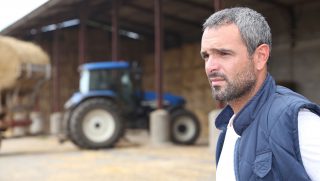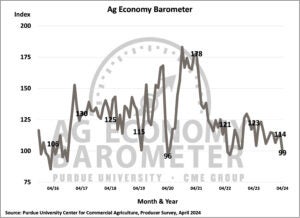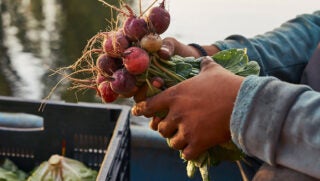In April, UK-based manufacturer CNH Industrial laid off over 200 workers at its location in Racine, Wisconsin, and announced plans to further reduce its workforce, leaving as few as 150 to 170 workers there by 2026.
“Agricultural machinery has been made in Racine by your workers for over 175 years — they have made Case-New Holland into the international manufacturing powerhouse it is today,” wrote U.S. Sen. Tammy Baldwin in a letter to Scott Wine, chief executive officer of CNH Industrial. “Moving production to Mexico as you are considering would not only be a slap in the face to the workers who have given so much, it would destroy the institutional knowledge that your workforce has developed over decades of building agricultural equipment.”
The cuts amounted to about one-third of the factory’s workforce and came nearly a year after workers went on a lengthy strike from May 2022 to January 2023 asking for wage increases.
“It’s really sad to see because Case used to be one of the premier employers in southeastern Wisconsin,” said Rich Glowacki, chair of the bargaining committee for UAW Local 180. “Most people, when they got hired at Case, pretty much said that their life was going to be on a better trajectory. Now, that’s all a fairy tale.”
It’s a hard hit for a county whose largest high school, J.I. Case High School, was named after CNH’s founder, Jerome I. Case. Even the high school’s mascot was created after the Case Eagle logo that J.I. Case adopted in 1865.
In her letter, Baldwin urged the company to abandon plans to move more of its production to Mexico.
“Despite delivering record profits for your company, your workers in Racine are being told their services are too expensive and are no longer welcome,” Baldwin wrote to Wine. “An average worker at your Racine plant earns $52,000 annually. Last year, you made nearly 350 times that, $18 million. In 2022, you made $22 million, and in 2021, you made $44 million.”
There are also questions on whether CNH Industrial properly notified the Wisconsin Department of Workforce Development of its workforce reduction. When companies like CNH reduce their workforce by more than 25 percent, Wisconsin law requires employers to provide 60 days’ notice to their workers, the DWD, their collective bargaining representatives, and local officials.
“Forgoing the notice is not only illegal, but it denies your workers these benefits to which they are entitled,” Baldwin said. “To my knowledge, your notification to your workers and their representatives were well short of the 60 days required by law.”
Baldwin also noted that the company spent $652 million on stock buybacks in 2023. The amount is four times more than the $150 million that the company hopes to save in workforce reductions.
“While I am disappointed by your recent leadership of CNH, there is still time to reverse course,” Baldwin wrote. “I encourage you to re-commit to your American workforce, particularly the workers in Racine who have delivered your company its record profits.”
One worker took to social media to post about her experiences with CNH Industrial in Wisconsin. In that post, she talks about the panic attacks she had and the defects she saw in Case IH machinery.
According to Reuters, CNH Industrial slashed its yearly profit outlook on Thursday and cautioned of sharper decreases in sales of farming equipment.
Decreasing farm revenues due to moderate crop prices and increased borrowing expenses are prompting a reassessment of significant purchases, creating an uncertain demand landscape for manufacturers of heavy machinery. Because of this, CNH anticipates a sales decrease of 11 to 15 percent in its agriculture segment for the year, a more significant drop than its earlier projection of 8 to 12 percent decline.









